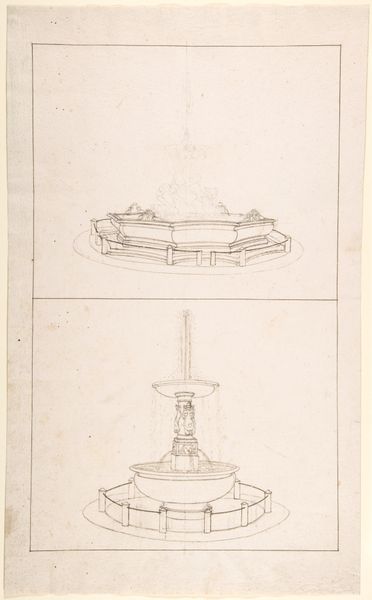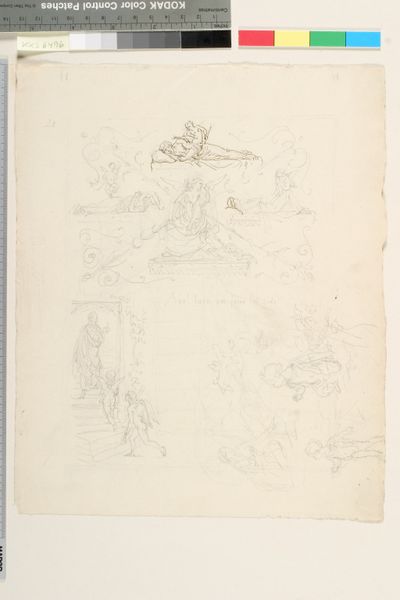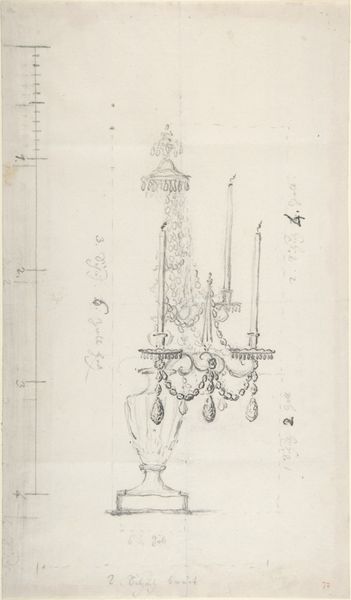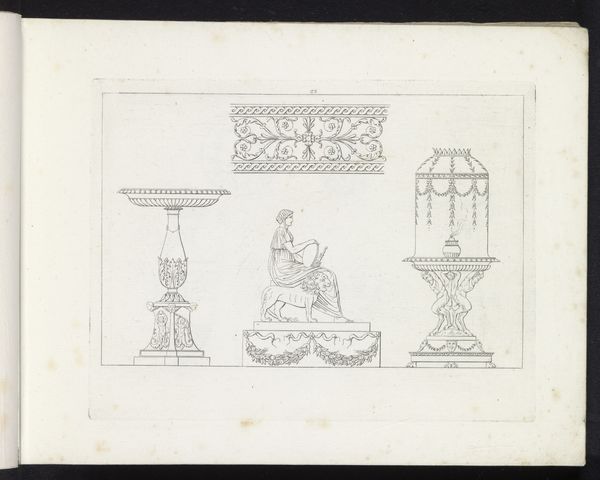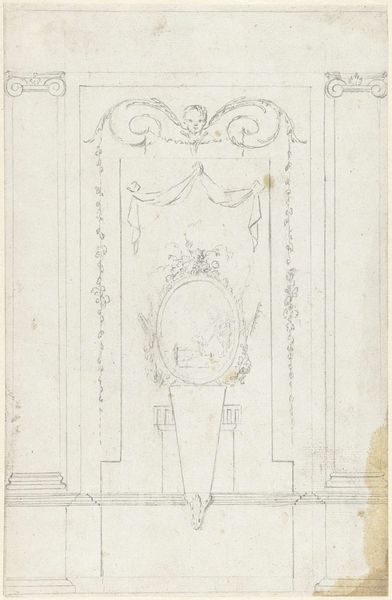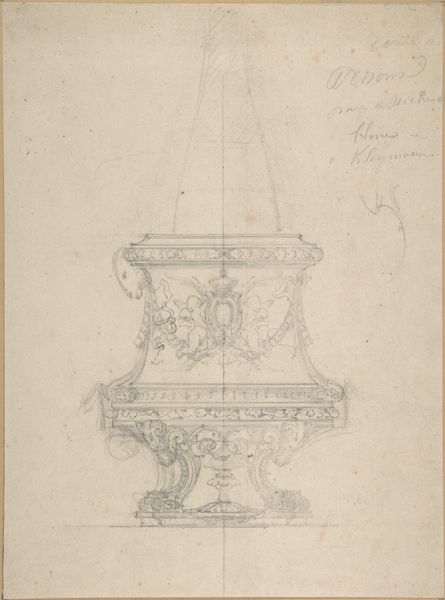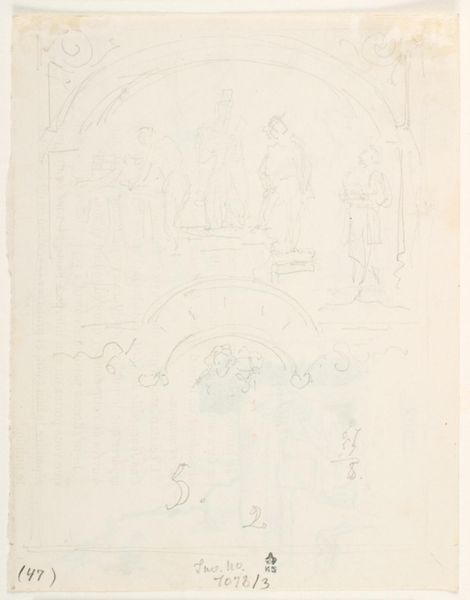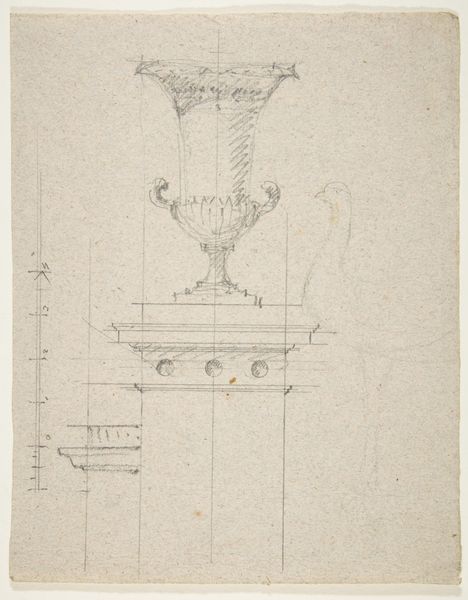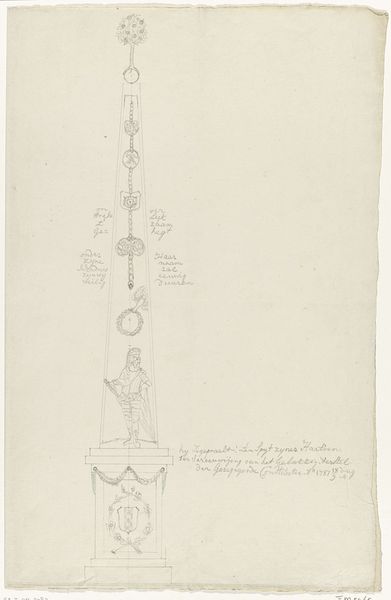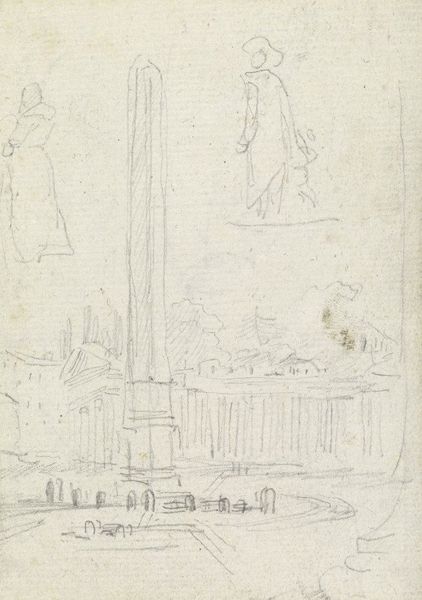
drawing, pencil, architecture
#
drawing
#
neoclacissism
#
form
#
geometric
#
pencil
#
history-painting
#
architecture
Dimensions: height 173 mm, width 134 mm
Copyright: Rijks Museum: Open Domain
Curator: This drawing, "Ontwerp voor een grafmonument voor A. Loosjes," possibly from 1808 by Hermanus van Brussel, presents a neoclassical design for a grave monument using pencil. Editor: It feels very formal and austere. All those geometric shapes… and the figures look like they’re participating in some solemn ceremony. What can we make of a design like this? Curator: Think about the late 18th and early 19th centuries – an era steeped in revolution and shifting power structures. Neoclassicism, with its references to ancient Greece and Rome, became more than just a style. It was often used as a visual language to evoke ideas of republicanism, civic virtue, and a rejection of aristocratic excess. This monument, in its design, almost politicizes death, wouldn't you agree? Editor: I see what you mean. The clean lines, the focus on geometry… it’s like trying to create a sense of order and control. I see how it can serve to make statements about values in tumultuous times. Curator: Exactly! It’s an assertion of reason and permanence in the face of uncertainty. And consider who Loosjes was: in what circles did he travel, and what ideals would a monument to him need to reflect? Who would he leave behind and how would they like him to be perceived? Do you think those in power have similar considerations in mind today when deciding how our historical figures and current icons should be memorialized? Editor: So the choice of neoclassical style wasn’t just aesthetic; it was a statement about Loosjes’ values and perhaps even about the patron's political leanings as well? Food for thought indeed. Curator: It speaks volumes, even centuries later. This drawing pushes us to think about how power manifests itself visually. Editor: Absolutely, it definitely makes me think about how art can be a tool for expressing—and negotiating—cultural and political identities.
Comments
No comments
Be the first to comment and join the conversation on the ultimate creative platform.
